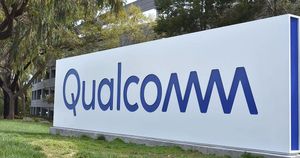
NavIC is India’s indigenous alternative to GPS developed by the Indian Space Research Organization (ISRO). Qualcomm announced support for NavIC navigation in its chipsets in 2019, which was one of the first civilian uses of this new system, that offers precise tracking of geographical location in the Indian subcontinent region.
Qualcomm has now announced support for L1 signals in NavIC for its upcoming processors. This move will boost the adoption of NavIC in smartphones that launch in India. But what is L1 support in NavIC, and why is it such a big deal? Let’s have a look.
L1 Signal Explained in NavIC
India’s NavIC operates in three frequency bands, L1, S, and L5. The S-band is reserved for military uses, and L1 and L5 are used for mixed purposes, which include civilian applications. Comparatively, the L5 band is more precise than L1 and can penetrate through walls more easily. Due to these reasons, during the rollout of NavIC by ISRO, L5-based satellites were given preference.
However, if we compare NavIC to other systems such as GPS and GNSS, the L1 band is more widely used than the L5 band. This is because the technology used in the L1 band is older, and is compatible with more devices. It also makes L1-based devices slightly more affordable than L5.
When more bands are added to a communication system, it increases the overall bandwidth allowing more users to access it. Hence, ISRO gradually added support for the L1 band in NavIC which increases the capacity of users that NavIC can handle.
This will also reduce the cost of implementation of NavIC in smartphones, as the hardware required for L1 comparatively costs less. Although Qualcomm had added support for NavIC in its processors in 2019, it was limited to the L5 band.
Remember, even if your processor supports NavIC, your smartphone OEM has to include the additional hardware in a phone to make it capable of utilizing NavIC. As NavIC support was limited to the L5 band earlier, the addition of this technology in phones was expensive for brands. Hence, NavIC support was more dominant on flagship devices than on budget phones.
Qualcomm Adds Support for L1 Band in Its Processors

Qualcomm has now announced that its upcoming processors will support L1-band NavIC from the second half of 2024. Hence, we can expect the upcoming Snapdragon 8 Gen 4 to be one of the first chipsets to feature NavIC L1.
Furthermore, L1 support is expected to roll out on midrange chipsets as well. It will also help phone makers to implement NavIC in budget devices as well.
Remember that the Government of India has mandated OEMs to include NavIC support on all phones starting from 2025. Hence, the addition of L1 support by Qualcomm in its chips will help smartphone brands adopt the technology in an affordable manner, without increasing the cost of the phones.
As per Qualcomm, the first set of devices with L1 NavIC is expected to launch in the second half of 2025. Until then, brands will have to use L5-based NavIC in their phones to meet the GoI’s deadline.














